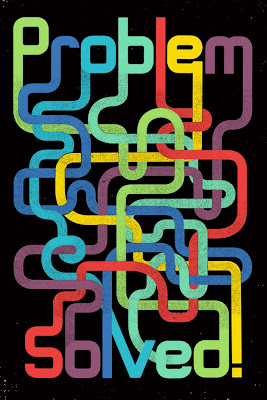September 1-7
When golf player Angelo Que encountered problems in his career, he overhauled his techniques with the help of sports psychologist Andrea Furst and swing coach Bong Lopez, and he went on to bag the 2008 Philippine Open and the 20th rank on the Asian Tour Order of Merit.
Problems are meant to be solved. Happily, there are a lot of ways to do that, and what they have in common is what think-tank RAND Corp. calls “Applied common-sense.” Here they are:
Redefine the challenge. Solutions come when you view the issue from a different perspective. Problem: Sony engineers in 1978 can’t fit the recording mechanism in their prototype small cassette.
Solution: Co-founder Masaru Ibaka instead got the idea of a portable player with headphones, and the Walkman became and still remains Sony’s flagship product.
Take advantage of the disadvantage. The idea sounds weird but it is a time-tested technique. Problem: Soo-Jin Jang’s Web-based company SNI went bankrupt during the 1997 Asian financial crisis.
Solution: Knowing that no one would develop a new program at such a time, he started JPD Internet, and its Widemail e-mail service became so successful that it was awarded the New Software Prize by the South Korean government.
Work backwards. Start from the possible outcome, then work your way back to find the answer. This method was developed by the Center for Constructive Change in Durham, New Hampshire, and they also give an example: Problem: How will you maximize your salary?
Solution: Ask yourself instead, What do I want to be 5 years from now? Whether it’s to be an entrepreneur or a Ph.D., you now have an idea of what to prioritize.
Break routines. Sometimes, radical problems need radical solutions, like changing your lifestyle to fit your new schedule or upgrading your business to capture a new market. Problem: Hugh Moore’s coin-operated, water-dispensing business was severely affected by the public panic about unsanitary drinking water.
Solution: He sold only his paper cups, got an endorsement from Kansas health officials, and renamed them Dixie Cups.
Gather ideas. The answer can come from anybody and anywhere so you have to be receptive to practical alternatives. Problem: Clarence Crane’s low sales of his chocolates during summer.
Solution: A druggist helped him develop a distinctive candy mint that looks like a sulbabida, and a New York salesman marketed them – and Life Savers became one the world’s most popular candies.
Photo courtesy of SimpleLifeStrategies.com

1 comment:
For future reference http://www.youtube.com/watch?v=gFX_Kav2Xl4&feature=related
Post a Comment